
| Ernst U. von Weizsaecker |
 |
|
 |
 |
 |
|
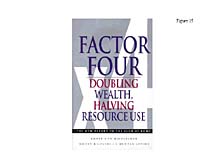
figure 16
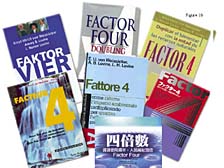
figure 17
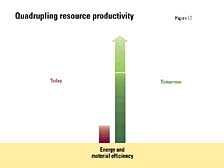
figure 18
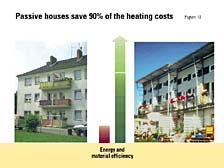
figure 19
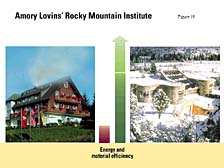
figure 20
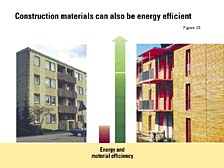
figure 21
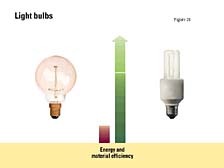
figure 22
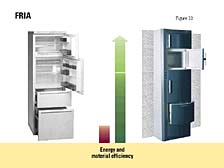
figure 23
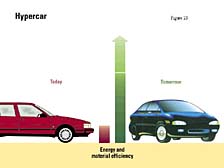
figure 24
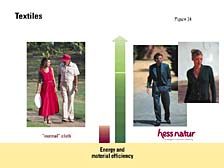
figure 25 |
Figure 16
Let me turn to solutions. What could be the solution? It is quite clear that we
are going to need technology improvements at least as large as a factor of 4 to
solve the problem. We have to reduce the overall rucksacks at least by a factor
of 2, and if we want to make people happy in places like Calcutta or Lagos or
Manila, the least we have to promise them is a doubling of wealth.
Figure 17
At the Wuppertal Institute we have been working on this question,
and I joined hands with my American friend Amory Lovins to collect
examples of factor of 4 improvements in resource productivity, and
we were able to collect 50 examples easily. We could have collected
200 examples demonstrating that a factor of 4 at least is available.
I'm going to introduce you in a moment to that new universe of technologies
and, indeed, fortunately for us, this book has been translated into
many other languages, including Japanese and also Chinese, both
complex characters and simplified characters. I believe it is now
the 12th edition.
Figure 18
Figure 19
When introducing you to this "Universe," as I call it, I'm going
to use the following kind of picture. Today we have a low energy
or material efficiency and tomorrow we are going to have at least
a quadrupled resource efficiency, and for this I am going to give
you a few examples. Let me start off with just ordinary apartment
buildings as you would see them today in Europe, and tomorrow it
could be "passive houses." This one happens to be one using one-tenth
of the heating energy and roughly one-fourth of the electricity.
Figure 20
The next is a similar thing. This is Amory Lovins' Rocky Mountain
Institute which, according to him, is "energy sufficient" throughout
the year, although six months of the year it is embedded in ice
and snow. But the main difference here between this and another
building, in this case Alpine House, is it hasn't got a chimney
because there is nothing to burn. Jokingly, when you ask him how
he is heating his Institute and home, he says: Oh, this is what
my staff are doing because they are all stoves of 37 degrees Centigrade,
and that's enough to heat the house. But, admittedly, for the very
cold winter days, he allows himself to clandestinely burn some wood
from his garden.
Figure 21
It is not only the management of energy. It is also the question
of construction materials, and there you see if you use wood and
look into the energy consumption used for manufacturing the construction
materials, you see wood being roughly a factor of 4 better than
the typical mix of aluminum, concrete, steel and glass. But, of
course, the balance is even better if you look at the carbon dioxide
side because when growing, wood absorbs carbon dioxide from the
air.
Figure 22
Figure 23
Everybody knows, of course, the light bulb story. I don't have to
dwell on that. This is a story also from Bio Schmidt-Bleek's team
at the Wuppertal Institute. Rupert Tishner has worked on an alternative
to a free standing refrigerator in your kitchen and has replaced
it by a cooling chamber built into the wall facing north. It is,
all in all, roughly a factor of 4 better with regard to both energy
and materials.
Figure 24
This is Amory Lovins' favorite example these days. It's a hypercar
which is meant to travel roughly 150 miles per gallon or uses a
liter and a half of petrol or diesel per 100 kilometers. Of course,
it is totally redesigned. It is ultra light. It has got a hybrid
engine. It has a small battery-electric kind of engine plus a small
internal combustion engine to cooperate in an optimized manner.
I'm not going into technical details now. If Amory were here he
would tell you 60 minutes about that.
Figure 25
We found a textile manufacturer in Germany, Hess Natur, who claims
that in the life history of his clothes only one-quarter of the
resources, notably water, is used as compared to conventional clothes.
Water, of course, as you all know, is one of the scarcest resources
of this earth and we have examples in factor 4 of water rationalization
in paper manufacturing, in households, including in the toilet system,
in agriculture, etc. It is one of the most fascinating fields of
technological advances.
|
|
|